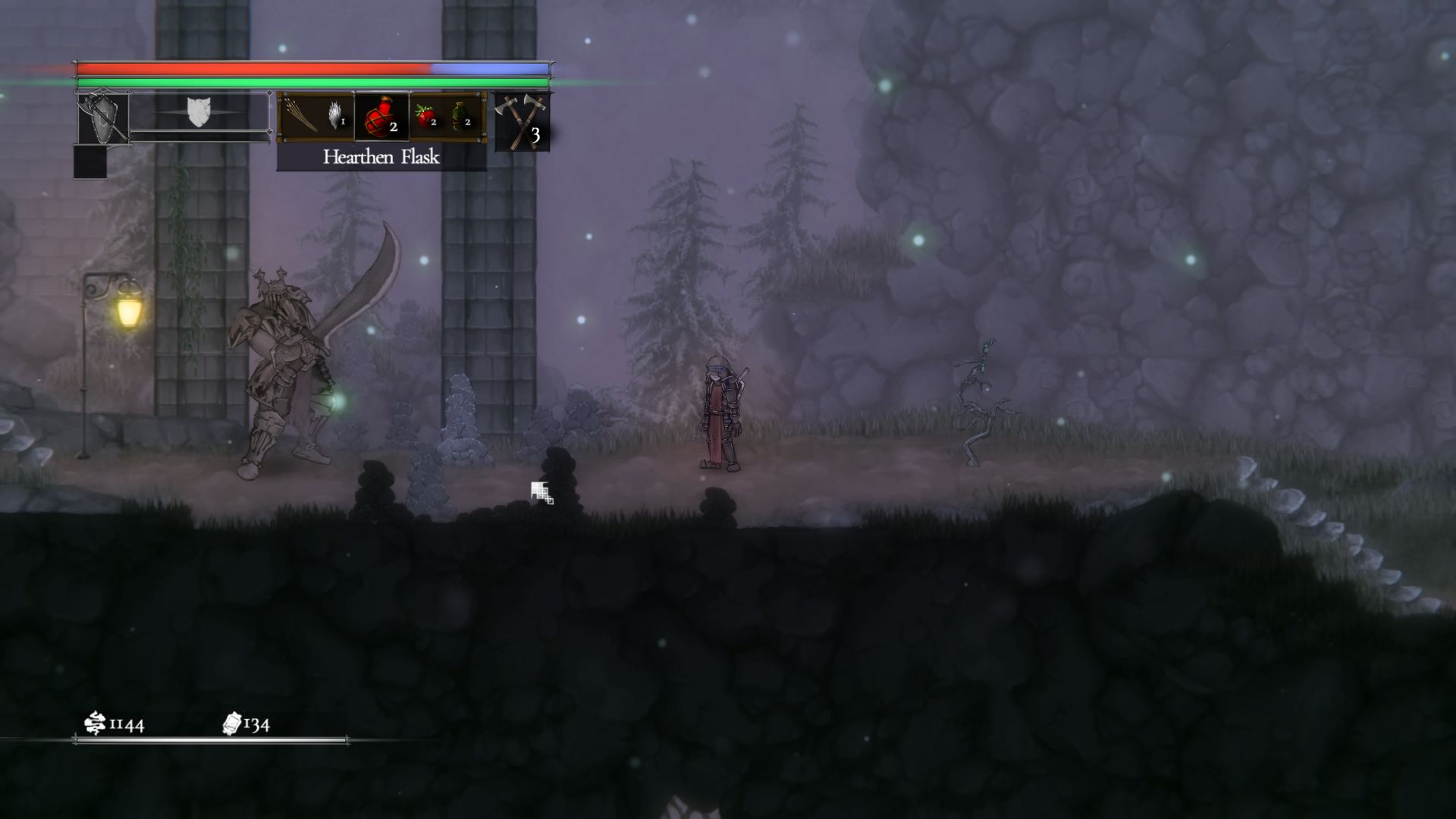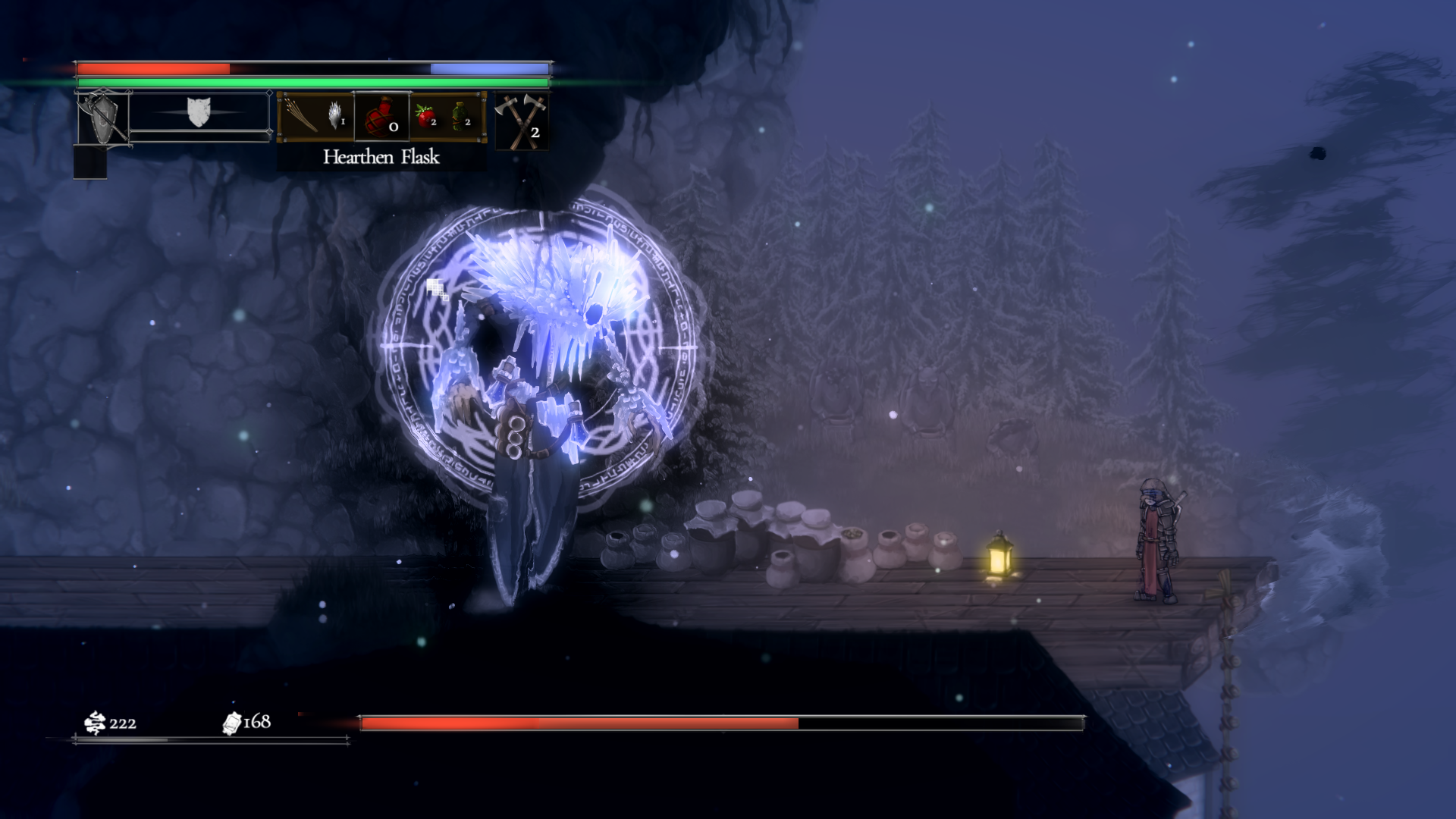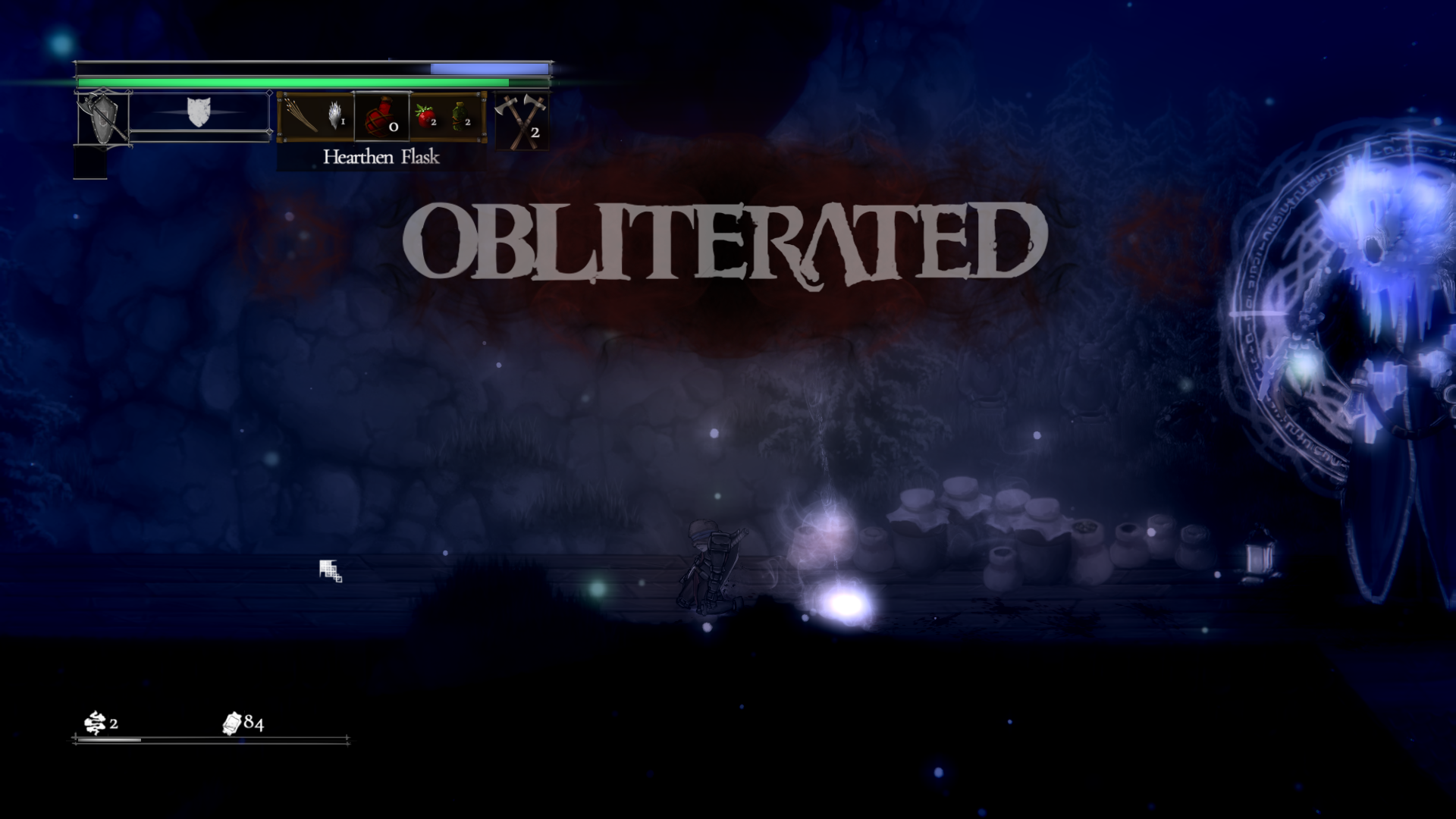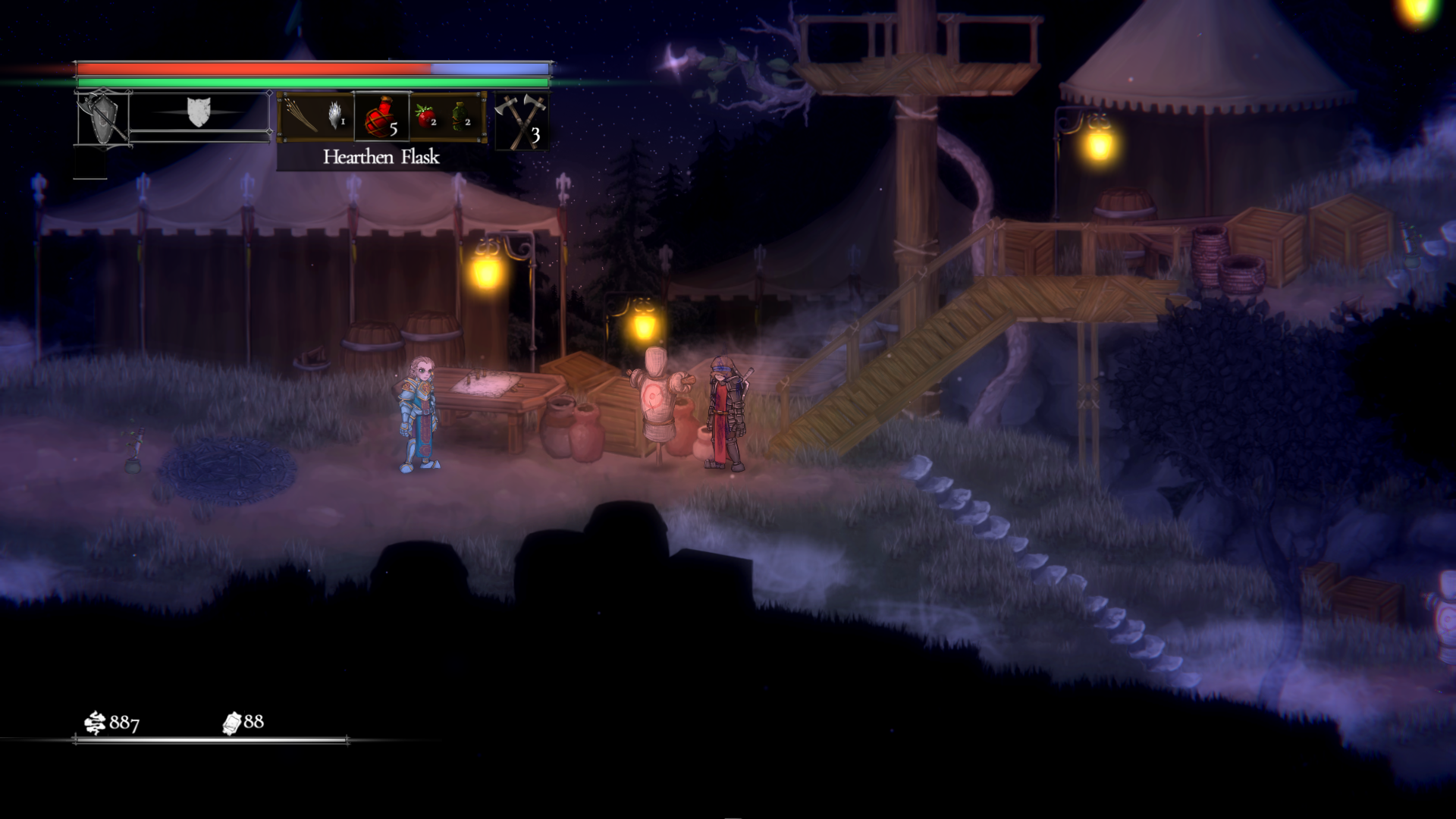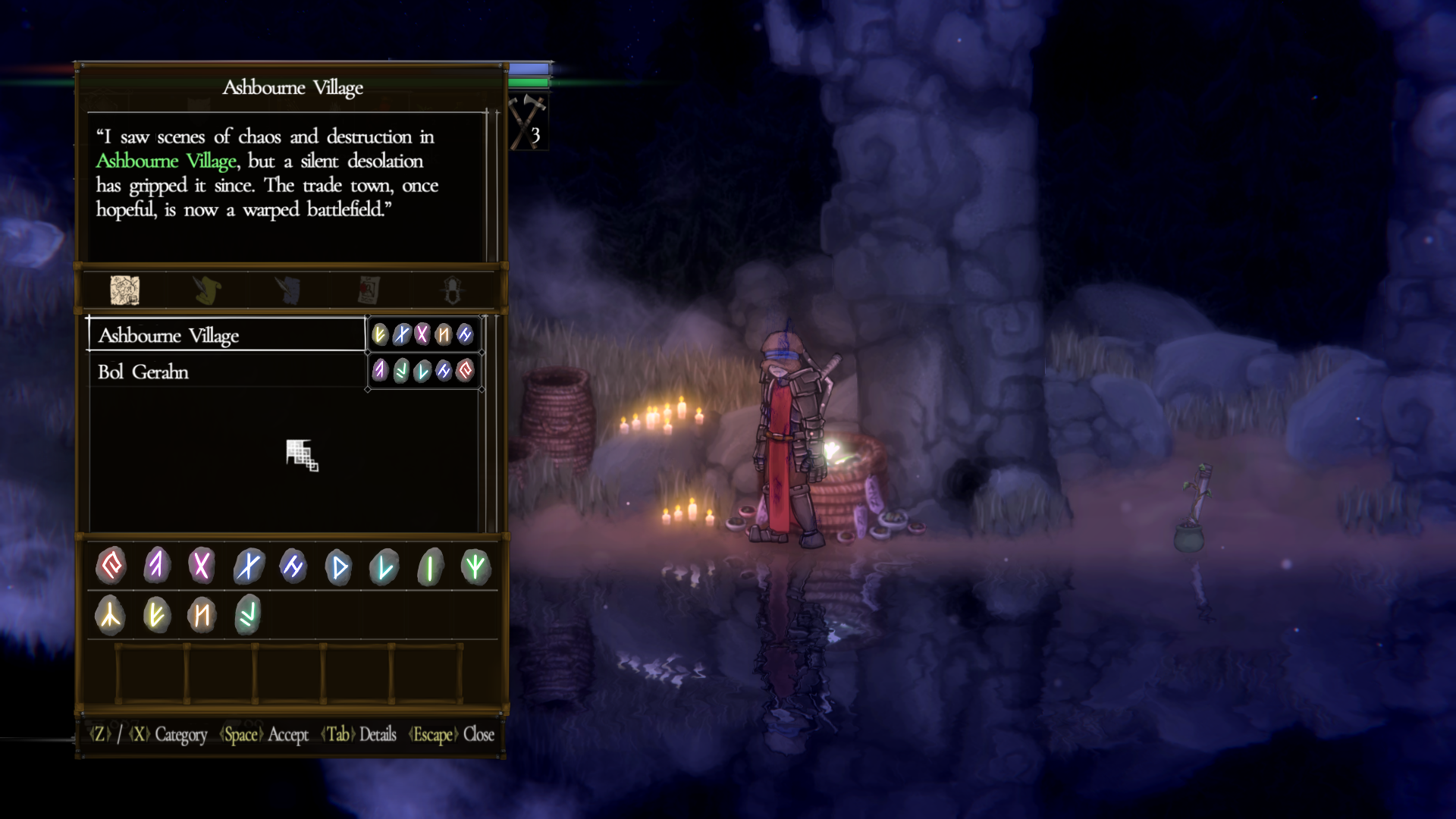Salt and Sacrifice is like that friend. A 2D, side-scrolling hack-and-slash adventure set in the ruins of a decaying world, Ska Studios’ sequel to 2016’s Salt and Sanctuary throws your pitiful adventurer against monsters of towering, hulking shapes and sizes, asking you to venture forth into the wider world and literally eat mages alive to restore balance throughout the land. Ska Studios’ sequel is like that friend because it’s a mostly surface-level study of the type of game it’s riffing on. Gone is any nuance in storytelling and dialogue, as NPCs and other side characters are nearly entirely one-note in their purpose of serving the player character and advancing your quest to restore the world. What remains is a tough-as-nails combat system that acts as the foundation for everything. That’s not to say the combat system is remotely bad, though. Salt and Sacrifice’s eponymous hero dives and dodges through a hail of enemy attacks, or alternatively stands tall with a shield - but with an incredibly limited stamina reserve to work with, the game goads you towards going on the offensive. There are genuinely nail-biting moments in combat, where you’ll try to sneak a heal in, or attempt to whack an enemy, just before their attack connects with you. The entire thing can be really, bloody tough. Because your stamina doesn’t restore while taking damage, you’re very likely to get combo attacked to death by two or more enemies in Salt and Sacrifice, with no way to actually get out. Enemies standing taller than you (of which there’s many here) can knock you up into the air for a good two or three successive hits like they’re a Devil May Cry protagonist, or send you flying back over half the screen while their minions bear down on you. Tough as Salt and Sacrifice can be, it’s not quite unwieldy. There’s actually a staggering amount of customization in Salt and Sacrifice’s protagonist and the equipment they bear. You can strike your foes from range with ice- or lightning-based magic, splatter them with colossal weapons, or chip away at their health with daggers imbued with elemental damage. Salt and Sacrifice keeps the item drops coming surprisingly thick and fast from felled enemies, so you’ll often find you’ve got a glut of items with which to tinker and customise your weapons. Salt and Sacrifice lets you experiment with its weapons of war, which is only fair given how brutal its boss fights can be. The early-game bosses come in a variety of monstrous mages, each the size of a house and specialising in smiting you with volleys of magical attacks, from ice and fire to lightning and poison. Couple towering bosses with a tiny 2D arena in which to work, and that’s a recipe for tense encounters where as little as a millimetre is all that can separate you from an attack that’ll send your hero to an early grave. The rogue’s gallery of bosses have a staggering amount of health, and all you can do is chip away at it while dodging and weaving through an endless onslaught. Boss encounters can definitely feel a little unfairly weighted at times, given blocking with a shield or standing at the edge of the arena and pelting them with ranged attacks aren’t viable options. “If you’ve been playing defensively up until now, good luck,” Salt and Sacrifice seems to say with its bosses, as the latest giant comes lumbering towards you with attacks that’d level buildings. The aforementioned mages are a key point to Salt and Sacrifice’s story, as the aim of the game is to eat them alive and heal the world (through very enigmatic means). Dubious morals of devouring someone alive aside, the plot is where a lot of Ska Studios’ sequel falls flat: too little is left unsaid, as every character back in the hub world of the game serves to remind you of the plot and spell things out to you in the most overt possible sense. Barely anyone has a personality or role outside of just explaining things to you, as though they’re museum exhibits meant to divulge information at your behest. Salt and Sacrifice might expand the world and scope of the original Salt and Sanctuary, but it doesn’t make it any more meaningful. Looking past the drab hub zone, Salt and Sacrifice’s various biomes are still plenty of fun to unpack. Take the starting area, for example: a monster-filled village which at first appears almost entirely horizontal, but becomes a vertical playground once you unlock the grappling hook, letting you literally ascend to new heights and explore dank caverns and corpse-strewn houses. There’s actually a surprising amount of vertically to the vast majority of Salt and Sacrifice’s various worlds, a thoroughly enjoyable treat when you’re not getting battered off ledges by beasties. Salt and Sacrifice is a riff on what came before, but not an entirely successful one. A tense, fraught combat system with gallons of customisation options carries Ska Studios’ sequel, and boss fights are entertaining if overly tough at times, but the storytelling and narrative designs of Salt and Sanctuary can’t hold up their end of the bargain.
